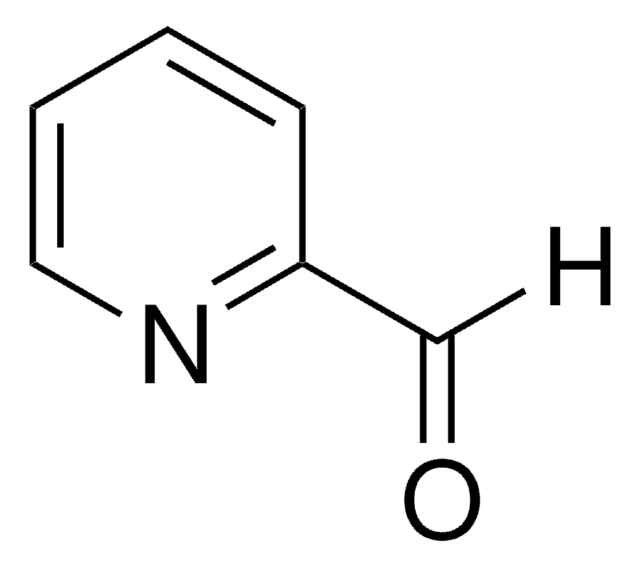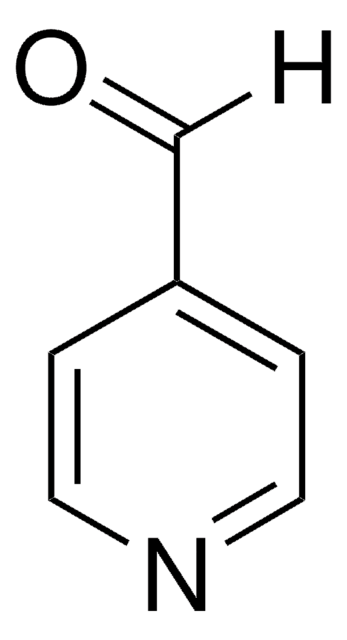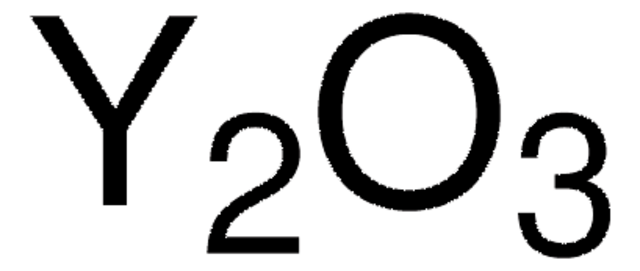637017
Bismuth(III) oxide
nanopowder, 90-210 nm particle size, 99.8% trace metals basis
Synonim(y):
Dibismuth trioxide
About This Item
Polecane produkty
opis
beta
Próba
99.8% trace metals basis
Postać
nanopowder
spherical
przydatność reakcji
reagent type: catalyst
core: bismuth
powierzchnia
3.2-3.5 m2/g
wielkość cząstki
90-210 nm
gęstość nasypowa
0.5‑1.1 g/mL
ciąg SMILES
O=[Bi]O[Bi]=O
InChI
1S/2Bi.3O
Klucz InChI
WMWLMWRWZQELOS-UHFFFAOYSA-N
Szukasz podobnych produktów? Odwiedź Przewodnik dotyczący porównywania produktów
Zastosowanie
- Characterization and Physical Properties of Nano-sized Bi2O3/Polymer: This research investigates the properties of bismuth(III) oxide nanoparticles within a polymer matrix, emphasizing energy and high-refractive index applications. It explores the potential of Bi2O3 in enhancing the performance of composite materials (A Alruwaili, AM El Sayed, 2024).
- Electroanalytical Performance Enhancement by Bismuth (III) Oxide: A study on incorporating bismuth(III) oxide nanoparticles into carbon ceramic electrodes to improve their electroanalytical capabilities, particularly for detecting pollutants in water (M Brycht et al., 2024).
- Visible Light Responsive Photocatalysts for Arsenic Remediation: This review highlights the role of bismuth-based photocatalysts, including bismuth(III) oxide, in the effective remediation of arsenic from water sources, underlining the photocatalytic capabilities of these materials (I Natali Sora et al., 2024).
- High-Performance Composites for Gamma-Ray Shielding: An investigation into fluoroelastomer composites filled with bismuth(III) oxide for their application in gamma-ray shielding, highlighting the material′s effectiveness in blocking radiation (SM Magnere et al., 2024).
Cechy i korzyści
Kod klasy składowania
11 - Combustible Solids
Klasa zagrożenia wodnego (WGK)
nwg
Środki ochrony indywidualnej
dust mask type N95 (US), Eyeshields, Gloves
Certyfikaty analizy (CoA)
Poszukaj Certyfikaty analizy (CoA), wpisując numer partii/serii produktów. Numery serii i partii można znaleźć na etykiecie produktu po słowach „seria” lub „partia”.
Masz już ten produkt?
Dokumenty związane z niedawno zakupionymi produktami zostały zamieszczone w Bibliotece dokumentów.
Klienci oglądali również te produkty
Produkty
Innovation in dental restorative materials is driven by the need for biocompatible and natural-appearing restoration alternatives. Conventional dental materials like amalgam and composite resins have inherent disadvantages.
Nasz zespół naukowców ma doświadczenie we wszystkich obszarach badań, w tym w naukach przyrodniczych, materiałoznawstwie, syntezie chemicznej, chromatografii, analityce i wielu innych dziedzinach.
Skontaktuj się z zespołem ds. pomocy technicznej











